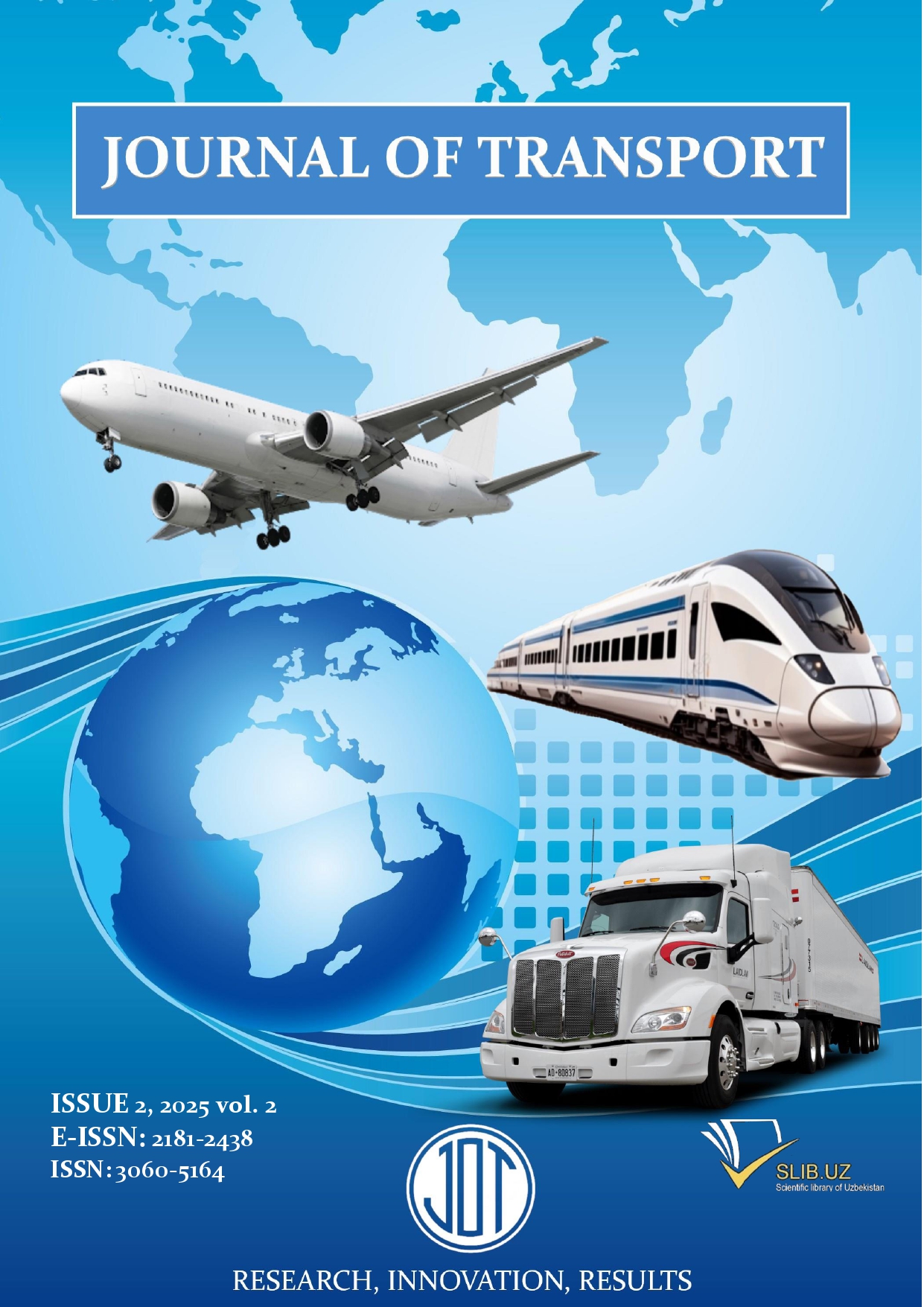El UzTE16M teplovozlari sovitish tizimiga uch bosqichli filtrlarni qo‘llash orqali dizel dvigatellarning samaradorligini oshirish
Аннотация
Mazkur maqolada teplovoz dizel dvigatelining sovitish tizimidagi suvda hosil bo‘ladigan qattiq cho‘kma (kaltsiy va magniy tuzlari) va korroziya oqibatida kelib chiqadigan muammolar tahlil qilinadi. Ushbu muammolarning maqsadida uch bosqichli gidromagnit filtrdan foydalanish taklif etilgan. Gidrotsiklon, magnit sterjen va maxsus matodan iborat filtr tuzilmasi va ishlash prinsipi batafsil yoritilgan. Gidrotsiklonning fizik-mexanik jarayonlari, ayniqsa, turbulent ajratish mexanizmlari matematik modellar orqali tahlil qilinib, zarrachalarning harakati, ajralish samaradorligi kabi parametrlar o‘rtasidagi bog‘liqliklar yoritilgan. Matematik formulalar va hisoblash algoritmlari asosida gidrotsiklonning optimal konstruktiv o‘lchamlari aniqlangan.
Литература
[2] Zayniddinov, N., Abdulatipov, U. B., & Yo‘lchiyev, U. (2025). O ‘zbekiston Respublikasida foydalanilayotgan UzTE16M teplovozlari dizellarini chidamliligini oshirish. Вестник транспорта-Transport xabarnomasi, 2(1), 56-58.
[3] М.М. Башаров, О.А. Сергеева. Устройство и расче гидроциклонов. Учебное пособие. Под редакцией А.Г. Лаптева. Казань 2012.
[4] Проектирование сооружений для очистки сточных вод: Справочное пособие к СНиП. – М.: Стройиздат, 1990. – 190 с.
[5] Лаптев А. Г. Эффективность турбулентной сепарации мелкодисперсной фазы в тонкослойных отстойниках / А. Г. Лаптев, М. М. Башаров, А. И. Фарахова // Энергосбережение и водоподготовка, 2011. № 5 (73). С. 43-46.
[6] Лаптев А. Г. Определение эффективности тонкослойных отстойников в турбулентном режиме / А. Г. Лаптев, М. М. Башаров, А.И Фарахова // Вода: химия и экология, 2011. № 5. С. 25-30.
[7] Лаптев А. Г. Модели пограничного слоя и расчет тепломассообменных процессов. Казань: Издво Казанск. ун-та, 2007. 500 с.
[8] Адельшин А. Б. Энергия потока в процессах интенсификации очистки нефтесодержащих сточных вод. Часть 1. Гидроциклоны. Казань: КГАСА, 1996. 200 с.
[9] Поваров А. И. Гидроциклоны на обогатительных фабриках. М.: Недра, 1978. 232 с.





